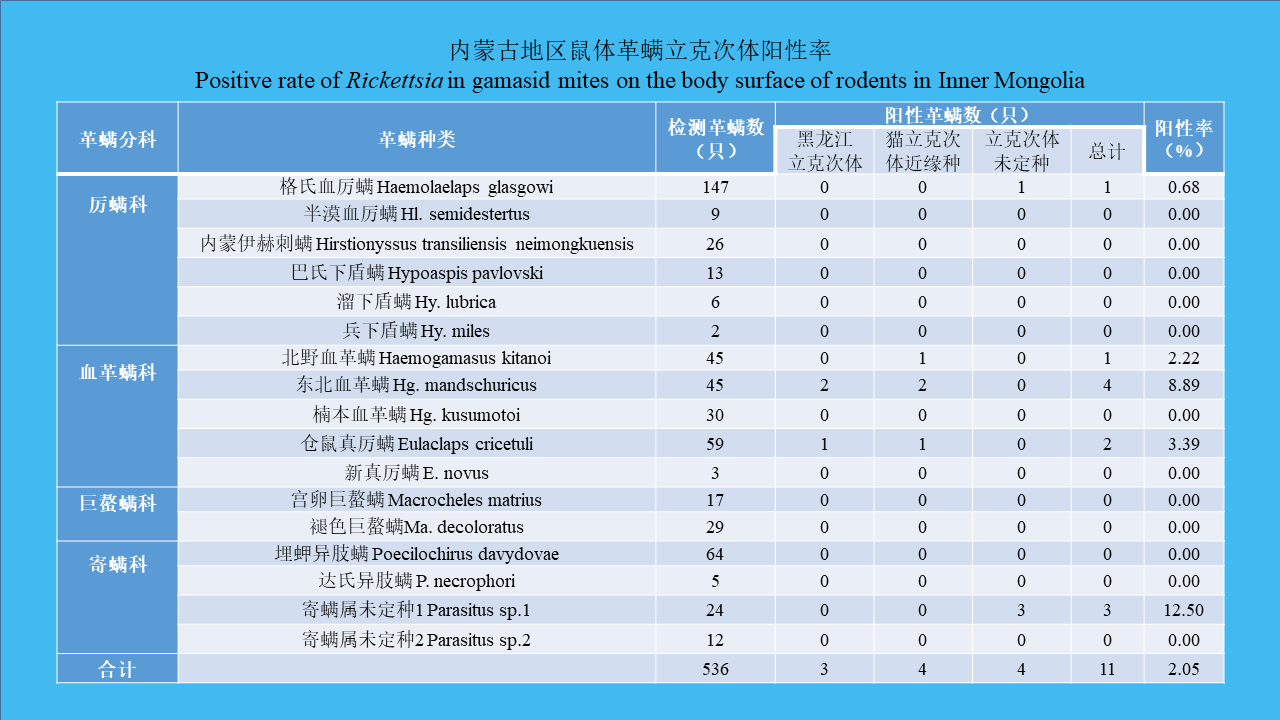 PDF(826 KB)
PDF(826 KB)


内蒙古地区鼠类体表革螨携带立克次体研究
王彬, 李贵昌, 董利, 母群征, 赵宁, 宋秀平, 鲁亮, 栗冬梅, 李兴洲, 刘起勇
中国媒介生物学及控制杂志 ›› 2023, Vol. 34 ›› Issue (2) : 244-249.
 PDF(826 KB)
PDF(826 KB)
 PDF(826 KB)
PDF(826 KB)
内蒙古地区鼠类体表革螨携带立克次体研究
 ({{custom_author.role_cn}}), {{javascript:window.custom_author_cn_index++;}}
({{custom_author.role_cn}}), {{javascript:window.custom_author_cn_index++;}}Rickettsia carried by gamasid mites on the body surface of rodents in Inner Mongolia, China
 ({{custom_author.role_en}}), {{javascript:window.custom_author_en_index++;}}
({{custom_author.role_en}}), {{javascript:window.custom_author_en_index++;}}
| {{custom_ref.label}} |
{{custom_citation.content}}
{{custom_citation.annotation}}
|
/
| 〈 |
|
〉 |